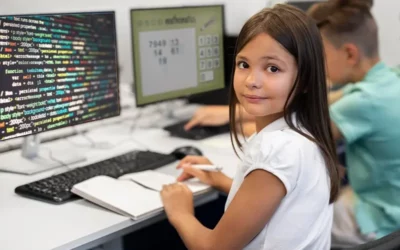In the vibrant tapestry of a child’s learning journey, there’s a magical thread woven through the realm of creative educational crafts for children. Imagine a world where the wonders of knowledge seamlessly blend with the joyous strokes of a paintbrush or the careful construction of a paper masterpiece. Engaging children in these imaginative pursuits isn’t just about creating cute projects to hang on the refrigerator; it’s about nurturing the very roots of their intellectual growth.
Crafts, you see, are like little windows into a child’s mind – portals that open up to a universe of possibilities. They are more than just glue, paper, and glitter; they’re gateways to critical thinking, problem-solving, and self-expression. As little hands mold clay or wield scissors, they’re not just crafting shapes; they’re shaping a foundation for lifelong learning.
In this exploration of creativity, children discover the thrill of experimentation, the joy of making mistakes, and the triumph of turning their visions into tangible reality. It’s not merely about the end result but the journey of discovery that unfolds in each crumpled paper, every splash of color, and the countless times they say, “Look what I made!”
So, let’s embark on a journey where education meets imagination, where the simple act of crafting becomes a powerful tool for building not just art projects, but the very essence of a child’s potential. After all, in the world of tiny hands and big dreams, creative educational crafts are the paint strokes that color a canvas of endless possibilities.
Table of contents
- Crafting Supplies
- Craft Ideas for Learning
- DIY Science Experiments: The Mad Scientist’s Lab
- Geography-Themed Crafts: Exploring the World One Craft at a Time
- Math Mania: Turning Numbers into Art
- Literary Masterpieces: Crafting Stories and Characters
- Eco-Friendly Crafting: Teaching Sustainability through Art
- History in Hand: Craft Your Own Time Machine
- Language Learning with Crafty Words
- Age-Specific Craft Suggestions
- Tips for Engaging Children
- Educational Benefits
- Conclusion:
- Frequently Asked Questions
Crafting Supplies
Crafting is not just about creating beautiful masterpieces; it’s a journey of exploration, learning, and self-expression for children. As parents, educators, or anyone involved in nurturing young minds, it’s crucial to understand the significance of providing the right crafting supplies. In this guide, we’ll delve into the basic supplies needed for children’s educational crafts and highlight the importance of age-appropriate materials and safety considerations.
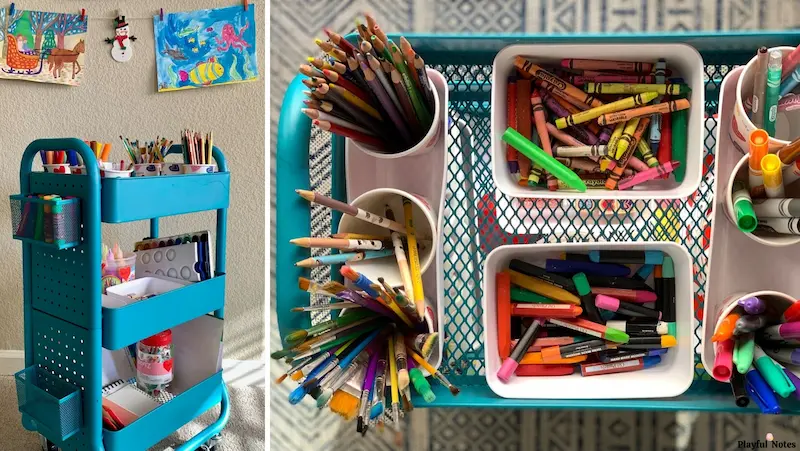
Crafting Essentials:
1. Paper and Cardstock:
The foundation of many crafts begins with good-quality paper and cardstock. From drawing and coloring to origami and collage, having a variety of paper types ensures endless possibilities for creative expression.
2. Colorful Markers and Crayons:
A vibrant array of markers and crayons can transform a blank canvas into a lively masterpiece. Encourage kids to experiment with different colors and techniques, fostering their imagination and fine motor skills.
3. Glue and Child-Safe Scissors:
Glue is the magical adhesive that brings crafts together, while child-safe scissors empower kids to cut shapes and materials with ease. These tools promote hand-eye coordination and boost confidence as little hands create their own unique designs.
4. Paints and Brushes:
Exploring the world of colors through paint can be both fun and educational. Watercolor sets, tempera paints, and various brush sizes allow children to experiment with different textures and techniques.
5. Modeling Clay or Playdough:
The tactile experience of molding clay or playdough is unmatched. This versatile material enhances sensory development, creativity, and fine motor skills. Plus, it’s a fantastic medium for sculpting mini masterpieces.
Age-Appropriate Materials:
Understanding the developmental stage of a child is crucial when selecting crafting supplies. Younger children may benefit more from large, easy-to-grip crayons and safety scissors, while older kids can explore intricate projects with finer details. Always check age recommendations on craft supplies to ensure a safe and enjoyable crafting experience.
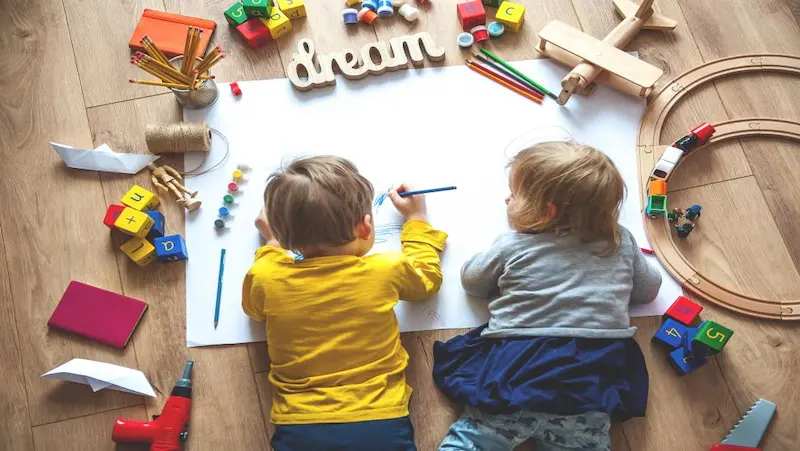
Safety Considerations:
1. Non-Toxic Labels:
Prioritize crafting supplies labeled as non-toxic to ensure the safety of children who may accidentally put materials in their mouths. This precaution is especially crucial for younger kids who are still exploring the world through taste.
2. Small Parts Awareness:
Be mindful of small craft components, such as beads or sequins, that could pose a choking hazard for younger children. Choose larger, easy-to-handle materials for the little ones to minimize risks.
3. Supervision and Guidance:
While crafting is a fantastic solo activity for kids, having adult supervision, especially with younger children, ensures a safe environment. Offer guidance on proper tool usage and reinforce the importance of keeping crafting spaces tidy.
Craft Ideas for Learning
In a world buzzing with screens and gadgets, there’s something magical about hands-on learning through crafts. Crafting isn’t just about making pretty things; it’s a gateway to a world of knowledge and discovery. Here, we’ve gathered a bunch of craft ideas that not only promise fun but also sneak in a bit of learning along the way. So, grab your crafting supplies and let the learning journey begin.
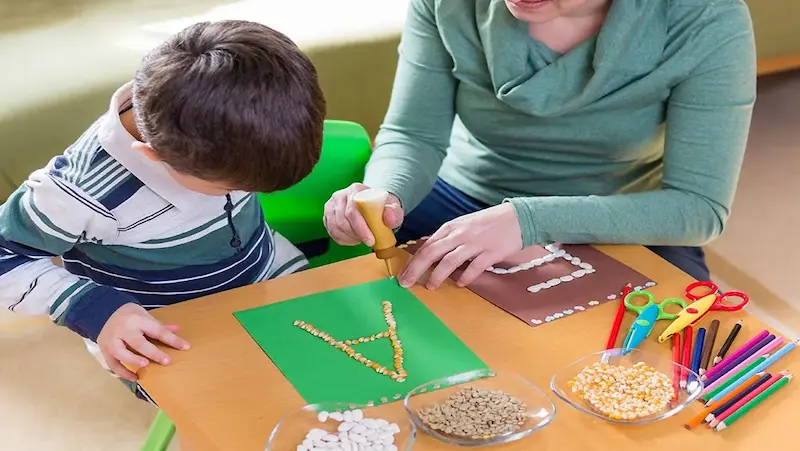
DIY Science Experiments: The Mad Scientist’s Lab
Transform your living room into a mad scientist’s lab with simple and exciting science experiments. Create a volcano eruption with baking soda and vinegar, or grow your own crystals. These experiments not only spark curiosity but also teach basic scientific principles in a playful way.
Geography-Themed Crafts: Exploring the World One Craft at a Time
Make geography a hands-on adventure! Craft a world map puzzle using cardboard and paint, or create a salt dough globe. These projects not only enhance fine motor skills but also help kids grasp the concept of continents, countries, and oceans in a tangible way.
Math Mania: Turning Numbers into Art
Who says math can’t be fun? Integrate math into your crafting sessions with activities like creating geometric shapes with popsicle sticks or making a multiplication flower. These projects not only reinforce math concepts but also make numbers come alive in a creative way.
Literary Masterpieces: Crafting Stories and Characters
Encourage storytelling and creativity by crafting characters from your favorite books or inventing new ones. Create a storybook with handmade illustrations or design your own book cover. This not only enhances literacy skills but also fosters a love for storytelling.
Eco-Friendly Crafting: Teaching Sustainability through Art
Crafting can be not only fun but also eco-friendly! Use recycled materials to create art projects that teach kids about sustainability. Make planters from old containers or turn cardboard into a colorful masterpiece. These projects instill a sense of responsibility towards the environment.
History in Hand: Craft Your Own Time Machine
Bring history to life through crafts by recreating historical artifacts or crafting a time machine from a cardboard box. These projects make history tangible and help children connect with the past in a memorable way.
Language Learning with Crafty Words
Combine language learning with crafting by making word collages or crafting letters from different materials. This not only enhances vocabulary but also makes language learning a hands-on and engaging experience.
Age-Specific Craft Suggestions
Let’s dive into age-specific craft suggestions and discover how these creative endeavors can play a crucial role in your little one’s growth.
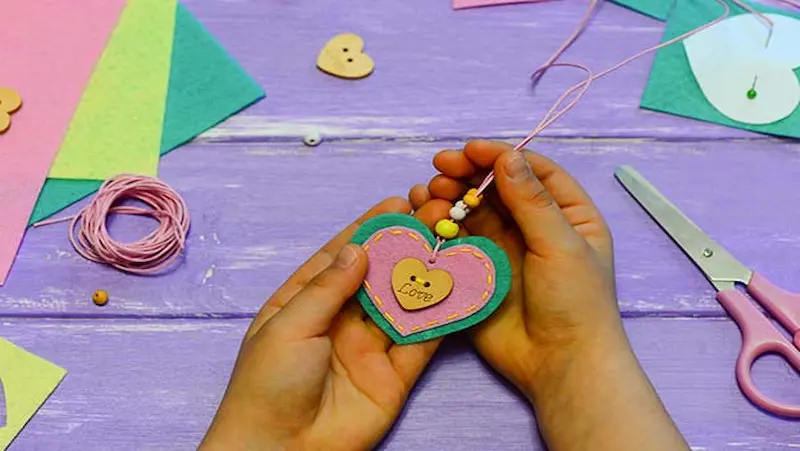
Toddlers (1-3 years):
Ah, the delightful world of toddlers, where everything is an adventure waiting to happen! For these tiny tots, the focus should be on sensory exploration and simple, safe materials. Think finger painting with non-toxic colors, or creating textured collages using soft fabrics. These activities engage their senses, promoting hand-eye coordination and motor skills. Plus, it’s just plain fun to get those little fingers covered in paint!
Preschoolers (3-5 years):
Preschoolers are like sponges, soaking up knowledge and skills at an incredible rate. Crafts for this age group can be a bit more intricate. Try activities that involve cutting and pasting, like making paper plate animals or creating a collage of their favorite shapes and colors. These projects enhance fine motor skills and encourage cognitive development by introducing basic concepts like shapes and colors.
Elementary School Children (6-12 years):
As kids enter elementary school, they’re ready for crafts that challenge their creativity and patience. Think DIY projects such as creating personalized bookmarks, friendship bracelets, or even simple sewing projects. These activities not only hone fine motor skills but also instill a sense of accomplishment as they see their creations come to life. Crafting becomes a way for them to express themselves and build confidence in their abilities.
Developmental Benefits:
- Fine Motor Skills: From holding a paintbrush to cutting paper, crafting activities improve a child’s fine motor skills. These skills are essential for tasks like writing and tying shoelaces.
- Cognitive Development: Crafting introduces children to various shapes, colors, and patterns, laying the groundwork for more advanced learning. Following instructions for a craft project also enhances their ability to follow directions.
- Creativity and Self-Expression: Allowing children to explore their creativity through crafts fosters self-expression. It’s a space where they can make decisions, experiment, and see the tangible results of their choices.
- Patience and Persistence: Not every craft project goes smoothly from start to finish. Sometimes there are challenges to overcome. This teaches children the value of patience and persistence, crucial life skills.
Tips for Engaging Children
As parents, educators, or anyone working with children, we understand the joys and challenges of keeping little ones engaged in creative activities. Crafting sessions, filled with colors, glue, and imagination, can be a magical time for both adults and children alike. To ensure these moments are not just messy but also meaningful, here are some simple and practical tips to keep the spark alive in every craft session.
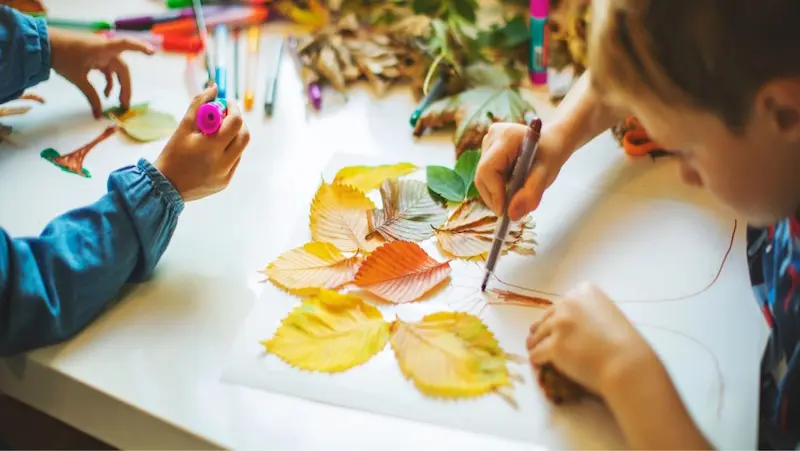
Crafting Tip #1: Choose Exciting Projects
The first step to crafting success is choosing projects that ignite the children’s curiosity. Opt for activities that align with their interests, whether it’s animals, space, or superheroes. This way, they’ll be excited to dive into the creative process, and the end result will be a masterpiece fueled by passion.
Crafting Tip #2: Make it a Team Effort
Crafting is not just about the finished product; it’s about the journey. Involve children in the decision-making process. Let them choose colors, materials, and even the theme of the project. This sense of ownership fosters enthusiasm and pride in their creations.
Crafting Tip #3: Keep it Simple
While it’s tempting to embark on elaborate projects, simplicity often reigns supreme when it comes to engaging children. Break down tasks into manageable steps, providing clear instructions along the way. This not only prevents frustration but also allows children to experience the joy of completing each stage successfully.
Crafting Tip #4: Embrace the Mess
Crafting can get messy, and that’s perfectly okay! Create a designated crafting area where spills and splatters are part of the fun. Lay down newspapers or use washable tablecloths to make cleanup a breeze. When children know they have the freedom to explore without worrying about the mess, they’ll be more inclined to unleash their creativity.
Crafting Tip #5: Foster a Positive Environment
Set the crafting stage with a positive and encouraging atmosphere. Praise their efforts, no matter the outcome, and celebrate the uniqueness of each creation. This boosts their self-esteem and fosters a love for the creative process rather than just the end result.
Crafting Tip #6: Incorporate Storytelling
Combine the power of storytelling with crafting. Create narratives around the projects, allowing children to weave their imagination into the craft. This not only adds an extra layer of engagement but also enhances their storytelling skills.
Crafting Tip #7: Provide Varied Materials
Keep things interesting by offering a variety of crafting materials. From colored paper and googly eyes to beads and fabric scraps, having a diverse range of supplies sparks creativity and allows for endless possibilities. Don’t be afraid to mix and match to keep things exciting.
Educational Benefits
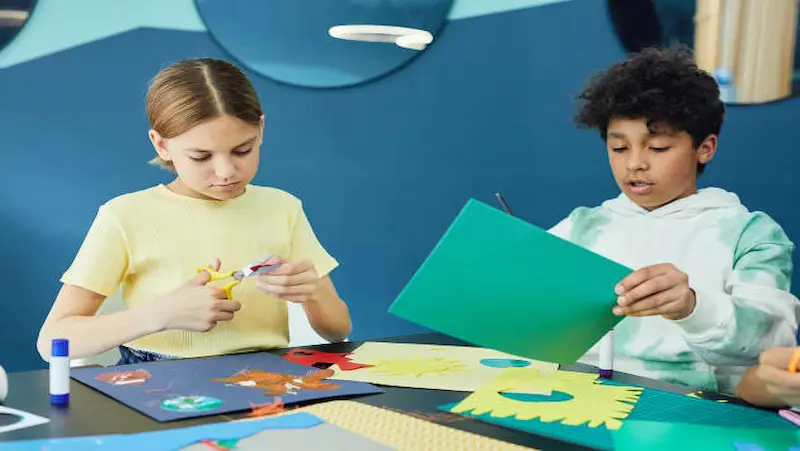
Crafts: More Than Just Fun
At first glance, crafting may seem like a simple pastime, but it’s so much more than that. When kids engage in crafting activities, they are embarking on a journey of skill development, cognitive enhancement, and a whole lot of fun. So, why should we encourage our little ones to pick up those scissors and dive into the world of crafts?
1. Hands-On Learning
Crafts provide a hands-on approach to learning that textbooks simply can’t replicate. Whether it’s cutting, pasting, or molding clay, these activities engage multiple senses, helping children understand and retain information more effectively. The tactile experience of crafting creates a tangible connection between what they’re learning and the real world, making concepts more concrete and memorable.
2. Stimulating Creativity
Creativity is like a muscle that needs regular exercise, and crafts are the perfect workout. When kids are given the freedom to explore different materials and ideas, their imaginations take flight. From deciding on colors to shaping their creations, they are not just following instructions; they are becoming little architects of their own worlds. This freedom to create fosters a love for thinking outside the box, a skill that will serve them well in their academic and personal lives.
3. Developing Fine Motor Skills
Crafting involves intricate movements that fine-tune those little fingers. From cutting with scissors to tying knots, these activities enhance fine motor skills. These skills are crucial for various academic tasks, such as writing, typing, and even solving mathematical problems. So, while they’re having a blast creating masterpieces, they’re also fine-tuning the motor skills that lay the foundation for future academic success.
4. Problem-Solving in Action
Crafting is like a mini adventure where problems pop up, and solutions need to be found. Whether it’s figuring out how to make a paper airplane fly farther or troubleshooting a design flaw in a craft project, children learn to analyze situations and think critically. These problem-solving skills go beyond the crafting table and become invaluable tools in navigating the challenges of school and life.
5. Boosting Confidence
Completing a craft project, no matter how simple, instills a sense of accomplishment in children. They take pride in their creations, and this boost in confidence spills over into other aspects of their lives. As they see that their efforts can lead to beautiful outcomes, they become more willing to tackle new challenges and take on learning with enthusiasm.
Conclusion:
In the end, fostering creativity through educational crafts isn’t just about keeping kids busy—it’s about building connections and making learning a joyful journey. Encouraging parents and caregivers to dive into these creative adventures with their children not only cultivates a love for learning but also strengthens the bonds that make childhood truly magical. So, let’s grab some art supplies, get a little messy, and create memories that last a lifetime. After all, the best lessons are the ones painted with laughter, curiosity, and a touch of imagination.
To get your hands on more such articles, educational content, and free resources on coding classes for kids, online robotics classes for kids, game development, etc., check out the BrightCHAMPS Page now!
Frequently Asked Questions
A1. Our crafts cater to a wide range of ages, typically from 3 to 12 years old, with various activities tailored to different developmental stages.
A2. These crafts foster creativity, problem-solving, and motor skills while engaging kids in fun, educational activities.
A3. Most activities utilize everyday materials found at home, ensuring ease and convenience for parents and kids.
A4. Yes, the crafts often align with educational themes, such as science, geography, or art, to expand your child’s knowledge in a playful manner.
A5. Absolutely, our instructions are designed to be simple and straightforward, encouraging independence and exploration in children.

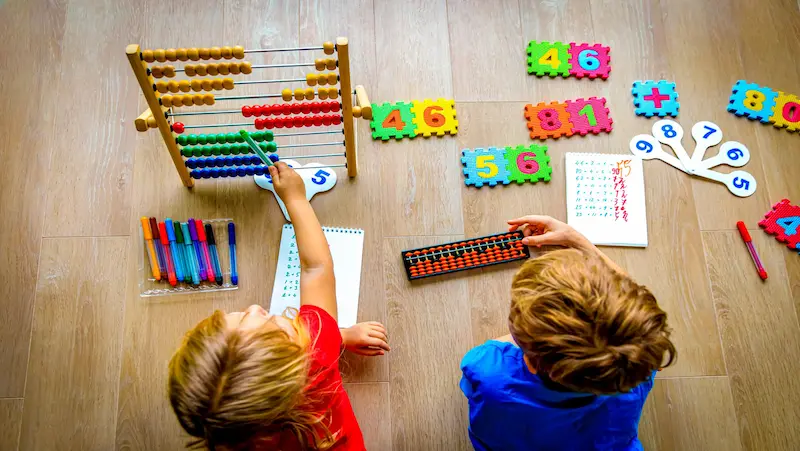
 We are an army of educators and passionate learners from BrightChamps family, committed to providing free learning resources to kids, parents & students.
We are an army of educators and passionate learners from BrightChamps family, committed to providing free learning resources to kids, parents & students.












